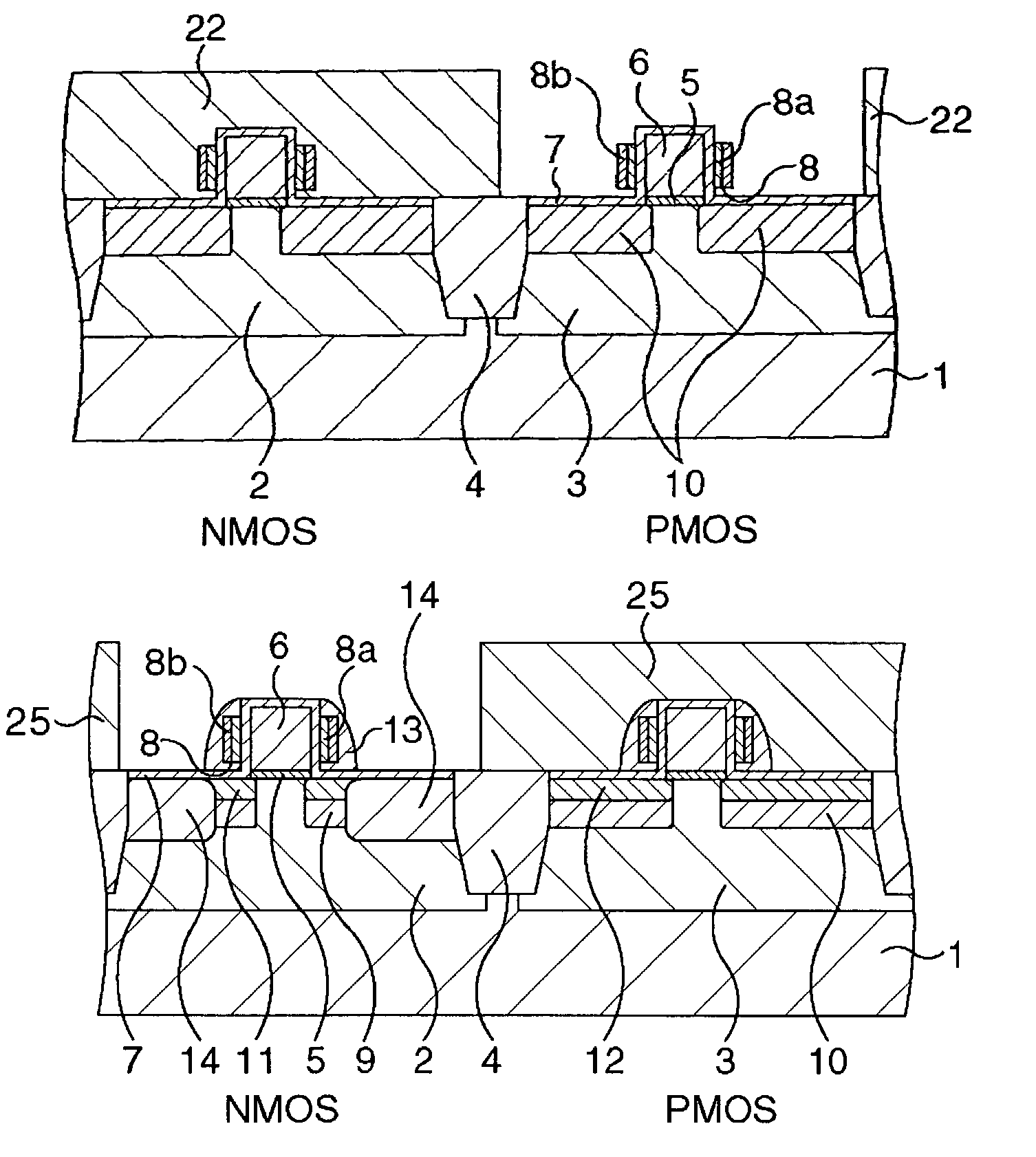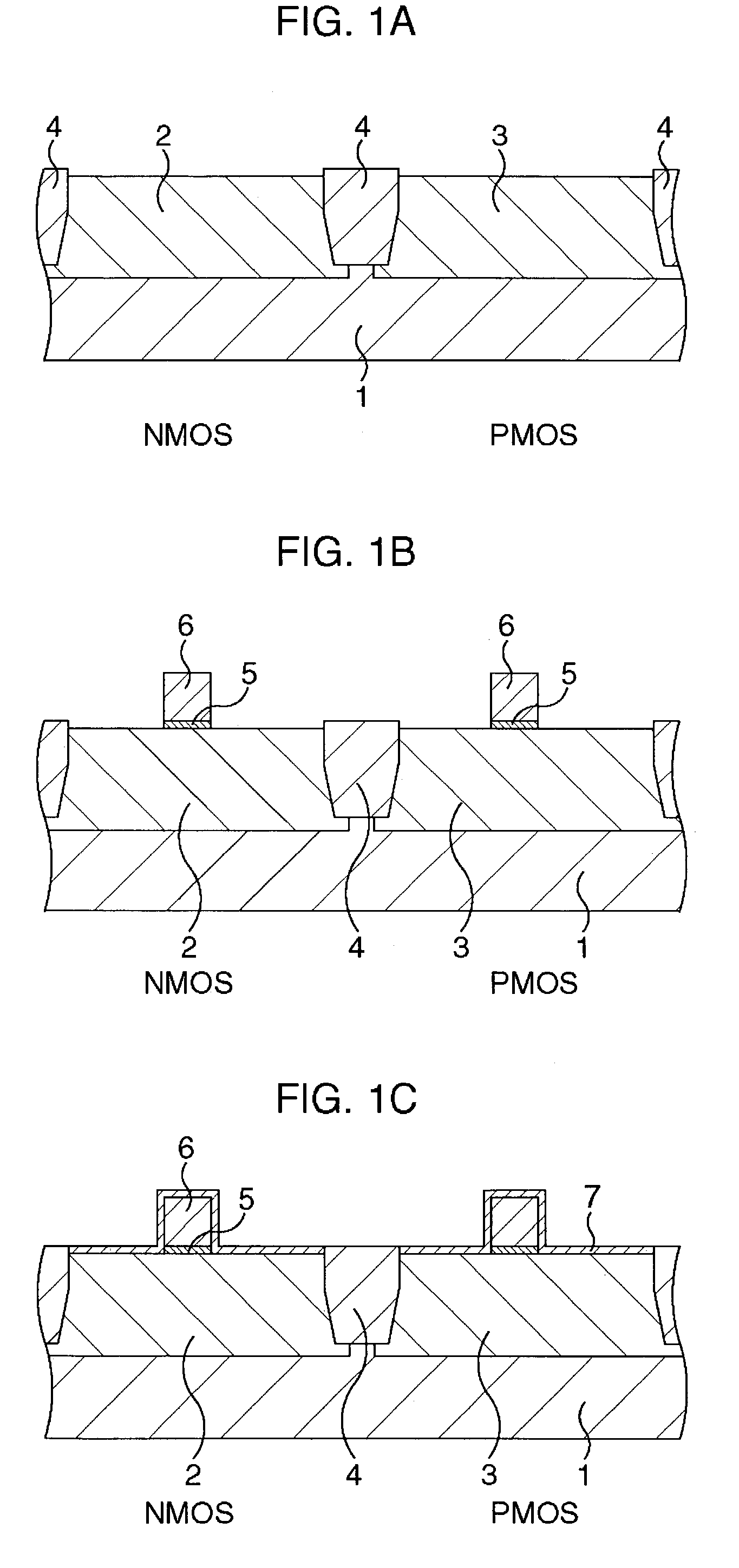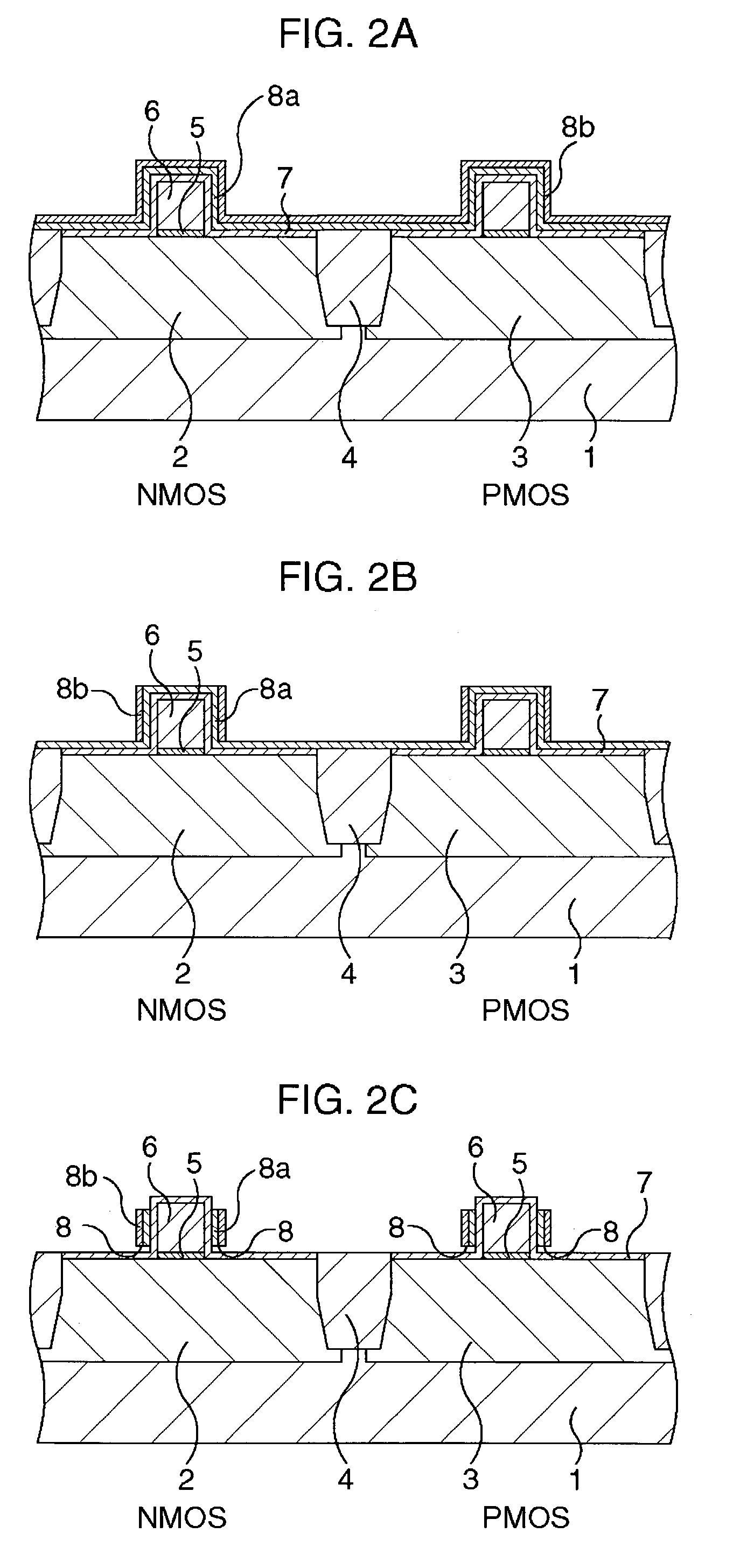Semiconductor device and method of manufacturing thereof
a technology of semiconductors and semiconductors, applied in the direction of semiconductor devices, electrical devices, transistors, etc., can solve the problems of loss of implanted impurities, oxidation of silicon substrates, and foregoing processes, so as to prevent outward diffusion of impurities, prevent depletion of channels, and excellent characteristics
- Summary
- Abstract
- Description
- Claims
- Application Information
AI Technical Summary
Benefits of technology
Problems solved by technology
Method used
Image
Examples
Embodiment Construction
[0041]The semiconductor device and the method of manufacturing thereof according to embodiments of the present invention will specifically be described below. FIGS. 1A through 5C are schematic sectional views serially showing the process steps of the method of manufacturing a semiconductor device according to the first embodiment of the present invention.
[0042]In the first embodiment, an element isolation region 4 is formed in the surficial portion of a P-type semiconductor substrate 1 as shown in FIG. 1A, and wells are then formed in the device forming areas partitioned by the element isolation region 4, where a P-well (channel) 2 is formed in an N-channel MOS (NMOS) area, and an N-well (channel) 3 is formed in a P-channel MOS (PMOS) area.
[0043]Next as shown in FIG. 1B, an insulating film and a polysilicon film are formed on the semiconductor substrate 1, and then patterned to thereby form gate insulating films 5 and gate electrodes 6, respectively, in the device forming areas. The...
PUM
| Property | Measurement | Unit |
|---|---|---|
| thickness | aaaaa | aaaaa |
| thickness | aaaaa | aaaaa |
| gas pressure | aaaaa | aaaaa |
Abstract
Description
Claims
Application Information
 Login to View More
Login to View More - R&D
- Intellectual Property
- Life Sciences
- Materials
- Tech Scout
- Unparalleled Data Quality
- Higher Quality Content
- 60% Fewer Hallucinations
Browse by: Latest US Patents, China's latest patents, Technical Efficacy Thesaurus, Application Domain, Technology Topic, Popular Technical Reports.
© 2025 PatSnap. All rights reserved.Legal|Privacy policy|Modern Slavery Act Transparency Statement|Sitemap|About US| Contact US: help@patsnap.com



